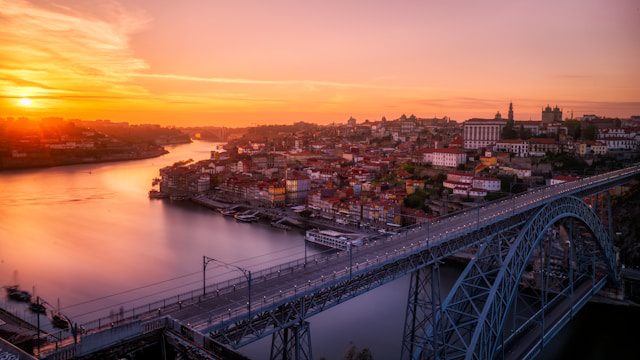Portugal, a country rich in culture and history, boasts an array of historical sites that tell the story of its past. From ancient Roman ruins to majestic medieval castles, these landmarks provide a fascinating glimpse into Portugal’s diverse heritage. A visit to Porto offers a blend of historical exploration and contemporary culture, making it a perfect addition to Portugal tours. Embark on a journey to explore some of the most unique historical sites that highlight Portugal’s legacy in stone.
Roman Ruins of Conímbriga
One of Portugal’s most significant archaeological sites, the Roman ruins of Conímbriga, offer a compelling window into the country’s Roman past. Located near Coimbra, Conímbriga was an important Roman city, and its well-preserved ruins include intricate mosaics, grand public baths, and the remnants of luxurious villas. Visitors can walk through the ancient streets and imagine life in this bustling city during its peak in the first century AD.
The Monastery of Batalha
A masterpiece of Gothic architecture, the Monastery of Batalha is a UNESCO World Heritage site that stands as a testament to Portugal’s medieval glory. Built to commemorate the Portuguese victory over the Castilians at the Battle of Aljubarrota in 1385, the monastery took over a century to complete. Its stunning Manueline-style additions, such as the ornate Chapter House and the Founder’s Chapel, showcase the exquisite craftsmanship of the period. The monastery’s cloisters and detailed stonework make it a must-visit for anyone interested in architectural history.
The Templar Castle of Tomar
Another remarkable site is the Templar Castle of Tomar, which is closely linked to the Knights Templar and their successor, the Order of Christ. Founded in the 12th century, this castle complex includes the Convent of Christ, renowned for its distinctive round church inspired by the Church of the Holy Sepulchre in Jerusalem. The castle’s intricate Manueline window, the Janela do Capítulo, is a highlight, reflecting Portugal’s Age of Discoveries. Exploring this site provides insight into the religious and military history that shaped Portugal.
The Roman Temple of Évora
In the heart of Alentejo lies Évora, a city with a rich tapestry of historical influences, including the well-preserved Roman Temple. Often referred to as the Temple of Diana, this ancient structure dates back to the first century AD and is one of the best-preserved Roman temples on the Iberian Peninsula. Its Corinthian columns and elevated platform make it an iconic symbol of Évora. The surrounding historic centre of Évora, also a UNESCO World Heritage site, offers a blend of Roman, Moorish, and Portuguese Renaissance architecture, making it a captivating destination for history enthusiasts.
The Pena Palace in Sintra
A striking example of 19th-century Romanticism, the Pena Palace in Sintra is a colourful and whimsical castle that seems straight out of a fairy tale. Commissioned by King Ferdinand II, the palace sits atop a hill, offering breathtaking views of the surrounding landscape. Its design incorporates Gothic, Renaissance, and Moorish influences, resulting in a unique and eclectic architectural style. The Pena Palace, with its vibrant hues and lush gardens, is a symbol of Portugal’s artistic heritage and a highlight of any visit to Sintra.
The Historic Centre of Porto
The historic centre of Porto, another UNESCO World Heritage site, is renowned for its picturesque streets, historic buildings, and vibrant cultural scene. The Ribeira district, with its narrow, winding streets and colourful houses, provides a charming backdrop for exploring the city’s rich history. Key landmarks include the imposing Porto Cathedral, the Church of São Francisco with its stunning Baroque interior, and the iconic Dom Luís I Bridge.
The Alcobaça Monastery
Founded in the 12th century, the Alcobaça Monastery is another UNESCO World Heritage site that highlights Portugal’s medieval heritage. This Cistercian monastery is renowned for its Gothic architecture and the serene beauty of its cloisters. The church houses the tombs of King Pedro I and his lover Inês de Castro, whose tragic love story is a poignant part of Portuguese history. The Alcobaça Monastery’s grand scale and historical significance make it a key site for those interested in medieval monastic life.
Conclusion
Portugal’s historical sites are a testament to its rich and varied past. From the ancient Roman ruins of Conímbriga to the Romantic splendour of the Pena Palace, each landmark offers a unique story carved in stone. Whether you’re exploring the Templar Castle of Tomar or wandering through the historic centre of Porto, these sites provide a fascinating journey through Portugal’s history. So, when planning your next adventure, consider delving into the captivating heritage of Portugal’s historical landmarks.







